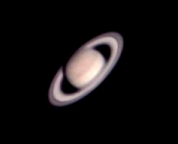
ASTROVID Color PLANETCAM TM $395.00
PAL ASTROVID PLANETCAMS AVAILABLE ALSO!!
NTSC PLANETCAM CHIP PDF
http://www.sel.sony.com/semi/PDF/ICX209AK.pdf
PAL PLANETCAM CHIP PDF
http://www.sel.sony.com/semi/PDF/ICX209AK.pdf
SEE THE REVIEW OF THE ASTROVID COLOR PLANETCAM IN THE AUGUST 2001 ISSUE of SKY & TELESCOPE MAGAZINE
"The New Astrovid Color PlanetCam from Adirondack Video Astronomy (AVA) is far better than any camcorder for color imaging through a telescope," ... Johnny Horne, Sky & Telescope review August 2001
IN STOCK!!!
ALL NEW CAMERA FEATURES INCLUDE:
480 Lines of Horizontal Resolution
Manual Gain Control
Gamma ( Contrast ) Control
Smooth / Sharpen Enhancements
Color Balance Control
UNIQUE- Normal / Negative image feature - (like photographic negative image pulls out detail in overexposed light areas)
1/4" Format 480 line high res. 1.0 LUX SONY INTERLINE-TRANSFER CCD
Auto - shutter /Manual Low and High shutter speeds.
ASTROVID - PLANETCAM shown with c to 1.25 inch adapter.
The ASTROVID COLOR PLANETCAM TM is smaller and weighs ONLY 190 GRAMS less than many eyepieces.
For absolute simplicity in use the PLANETCAM Video Camera requires only 12 volts.
The camera has gain control, color balance control, contrast control, smoothing and sharpening enhancements and will work very well with small telescopes such as the Nexstar 5, Meade ETX, Questar, or even on a 60mm refractor and with large telescopes as well.

Saturn Image by Todd Gross
High Resolution Solar Imaging !
CLICK ON THUMBNAIL
ASTROVID COLOR PLANETCAM NEXSTAR 5 IMAGE of Sunspots at prime focus. Baader ASTROSOLAR Film Used. Single Frame Image. Image Grabbed from standard 8 mm videotape using using Dazzle. Fine Solar Granulation Very Visible.
We had tested numerous 1/3 " inch format CCD's and always found the lux ratings to be a problem in obtaining high quality images. Either the image was too dim and the color information would fall apart or the camera would push the gain too high resulting in noisy grainy images. We could never achieve the proper balance where the image would be bright enough and still be low enough in noise to show the proper planetary detail.
After some private investigation and a consultation with Mr. Thomas A Dobbins , the famous planetary imager, author, and optical - mechanical designer, we decided to move into a new direction in the development of a small compact planetary imager.
The key to successfully using such a system to achieve high quality, high resolution video imaging at a shorter focal lengths ; to overcome lux problems inherent in the color format, and to increase the apparent image size of the objects was to utilize a smaller CCD with smaller pixels. The ASTROVID PLANETCAM TM uses a 1/4 inch format CCD chip with extremely small pixels 4.2 x 4.2 micron pixels. The reason this works is described in the following paragraph.
THE THEORY BEHIND THE ASTROVID PLANETCAM
The theory used by imagers in selecting a proper system to image an object is called The Nyquist Theory. It states that to properly image an object and prevent a loss of image detail from occurring "the sampled images must be no larger than half the size of the finest detail in the signal." In CCD and video imaging the unit of measure is the pixel. So each individual pixel must be no larger than 1/2 the finest detail seen in the images. For example, if the smallest detail visible in an image is a point source such as a star. The smallest pixel should be no larger than 1/2 the size of the smallest star captured. Therefore, in a properly matched system the star will actually cover two pixels.
The same holds true in a planetary image. You want a properly matched system to pick up the smallest planetary details. A good match for planetary imaging according to Doug George of Maxim DL fame is to have image scales of at least 1/2 arc second per pixel. Of course to achieve this type of resolution you will need a high quality telescope and a night of excellent seeing.
The formula to calculate the coverage of one pixel in arc seconds is as follows:
|
S= (205 x p)/fl |
|
s - is the pixel scale in arc seconds |
p- is the pixel size in microns |
fl - is the telescope focal length in mm. |
For an F/10 telescope with a focal length of 2000 mm :
s= 205 x 5/2000 s=0.5125 arc seconds per one pixel of the PLANETCAM
For a 90 mm ETX :
s= 205x 5/1250 s=0.8200 arc seconds per one pixel of the PLANETCAM
For an ETX 125:
s=205 x 5/1900 s= 0.5394 arc seconds per one pixel of the PLANETCAM
As you can see the ASTROVID PLANETCAM is capable of high resolution images at shorter focal lengths as compared to other video cameras with larger pixels.
Of course, you cannot image beyond the resolution of your telescope
In fact, the limiting resolution will not be due to the ASTROVID PLANETCAM but due to atmospheric seeing conditions and the resolving limit of your telescope.
One of the exciting features of using the PLANETCAM is that you can use it at prime focus for planetary imaging without a barlow lens or eyepiece projection !
The smaller size 1/4 inch CCD format will give you a larger apparent image size at a shorter focal lengths.
The small 1/4 inch CCD also works well at overcoming the high lux value problem associated with the 1/3 inch format Color CCD's . This enables the PLANETCAM camera to be used on smaller scopes, at shorter focal lengths and on larger telescopes at higher magnifications on bright objects.
Small Scopes And Large Scopes can both image with the ASTROVID PLANETCAM TM
The ASTROVID - PLANETCAM is only $395.00
CALL 1-877-348-8433 to Order
Item # AV-PCAM includes Camera, c to 1.25 inch adapter, 25 feet of video cable, 12 volt power supply, 1 year warranty and instructions.
Click Here for PLANETCAM specifications
Click here for the Computer Controlled PLANETCAM